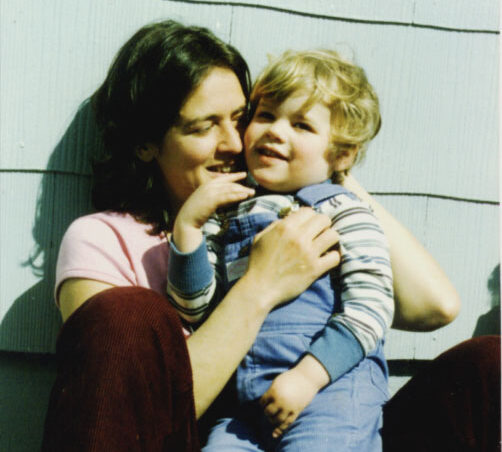As a parent of my severely handicapped son, I was constantly in the role of decision-maker and caregiver. I had to help him in nearly every way. And yet, I also had to learn to take in the nourishment he offered me.
When I forgot to expect and take in what he offered me, I got especially depleted. I dreaded his waking up and making new demands on me. I occasionally wanted to strangle the little darling. It did not make me a good parent, and when I expect depletion in a therapy session, it does not make me a good therapist.
We all need to receive care and attention. But caregiving roles—whether as parents or therapists—can easily reinforce win-lose relating and hierarchical patterns rooted in white supremacy culture. These roles often pull us toward control-oriented, one-way dynamics, leaving us vulnerable to resignation, burnout, and hopelessness.
One morning will always stay with me. My two-year-old son, non-verbal and brain-injured, was playing cheerfully at one end of the living room. I had collapsed in a chair at the other end, dripping quiet tears. Overwhelmed by the weight of caring for him, I let myself cry.
He noticed. Rolling—his only way to move—he came across the floor, pulled himself up into my lap, and held my gaze. Then he made a little chirping sound. It was bright, cheerful, and welcoming. He wasn’t demanding. He was welcoming, offering cheerful connection and hope.
My misery did not make him miserable. Instead, he shared his own joy and steadiness with me when I had none. This deeply dependent child, who needed me in so many ways, was also able to give to me.
That moment taught me something I keep returning to: the gift of hopeful connection is profound, whether we are the one receiving it or giving it.
As therapists, hope is one of the deepest resources we can offer clients: the hope of authentic connection. Connection where we don’t have to guard against overwhelming the other, where we do not need to put on a mask of positivity. Hopeful connection where we don’t have to suppress our emotions, hide our intensity, or fear being shamed. Hope that even with our limitations, we still have something valuable to offer. Hope that we can bring people in, close to our emotional world and find meaningful, healthy relating in our lives.
There is, however, a challenge: are we actually hopeful? It won’t work if it isn’t authentic. People—especially trauma survivors—have incredibly accurate BS detectors. Fake-o, nicey-nicey cheerful does not cut it! But when I experience genuine connection with those in my life, including clients, my hope grows.
When I take the risk of showing myself, exercise appropriate, healthy boundaries, and lean into connecting nervous-system-to-nervous-system, hope grows. Co-regulation makes a difference!
Life is demanding, and sometimes overwhelming. I invite you to consider the places in your life, personal and professional, where you could be more connected, share more mutuality, and build more hope. I want us to cultivate the intention to shift from win-lose dynamics to win-win, regenerative dynamics—whether we’re exchanging courtesies at the gas station or working with clients living with PTSD.
